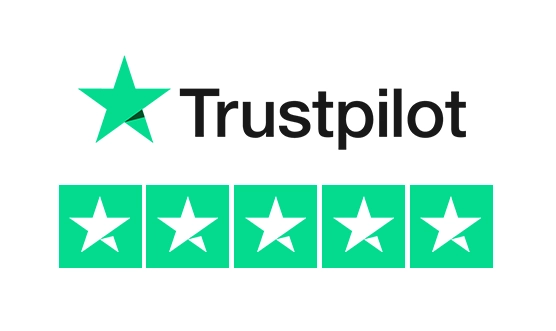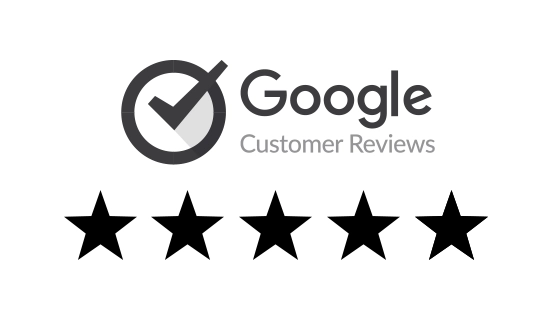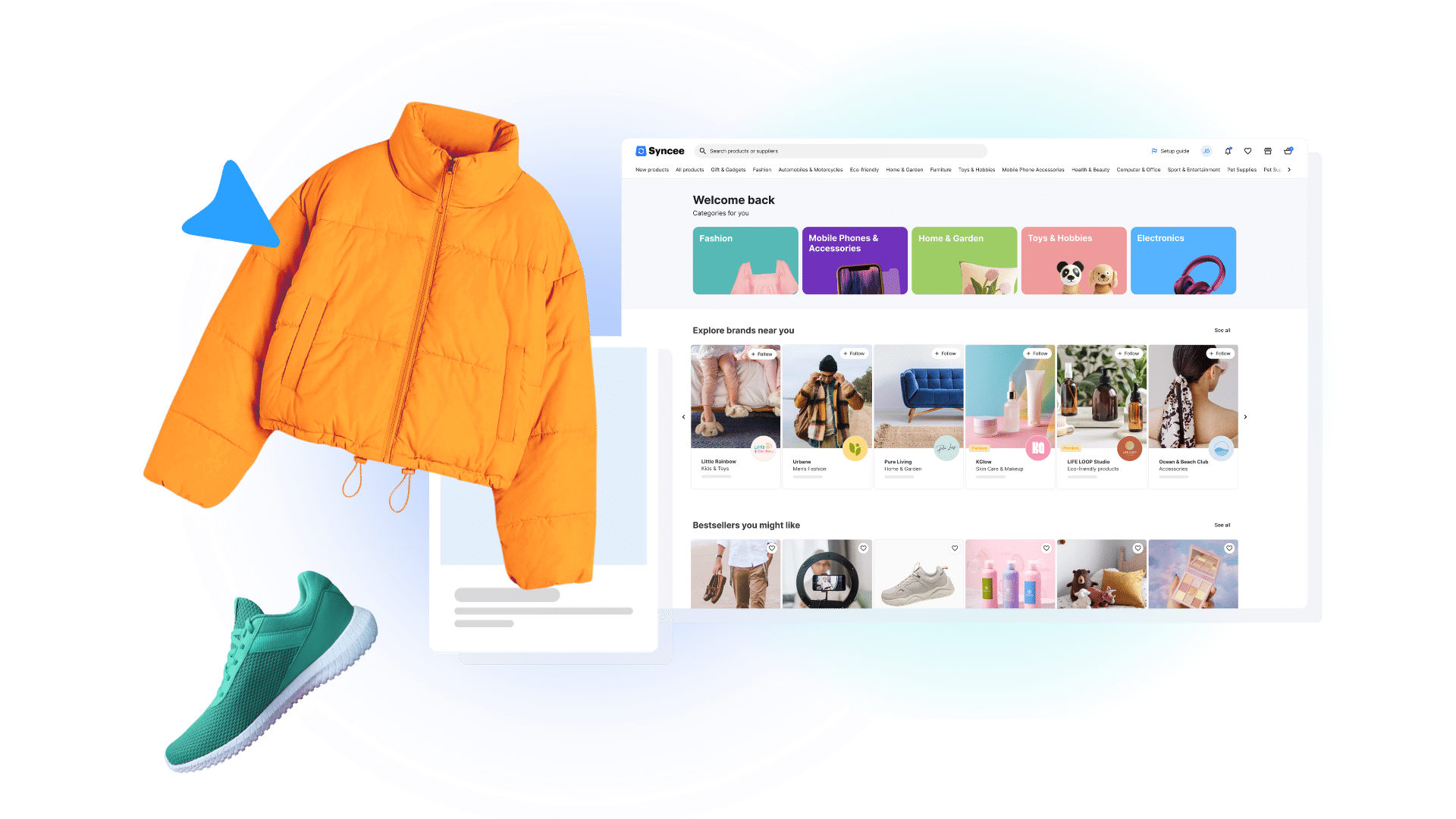Ecommerce is evolving at such a rapid pace, it may be difficult to predict what will happen next. How will consumer preferences change in a year, let alone five years?
Cross-border ecommerce is the key to online businesses’ exponential growth. After years of establishing an online store on the local market, it may be time to consider expanding into other countries.
In many ways, 2020 was a watershed year for the world, and 2021 will continue many of the digital transformation projects, trends, and predictions in the ecommerce industry. With that in mind, it’s time to reflect and consider what 2021 has in store for us!

Cross-border ecommerce is quickly becoming a requirement for growing and scaling an online business. This article takes a closer look at why this is so.
Let’s Take a Look Back Cross-border Ecommerce Shopping Statistics:
The statistics below show you details about the impact of COVID-19 on global ecommerce, how online purchasing habits change, overseas operations, branding, shipping worldwide, and more. The source for these statistics is from Webinterpret who collected the most significant factors related to online shopping at the end of last year.
In 2021, the global ecommerce market is expected to be worth $4.89 trillion. This figure is expected to rise in the coming years, indicating that borderless ecommerce is becoming a profitable option for online retailers.
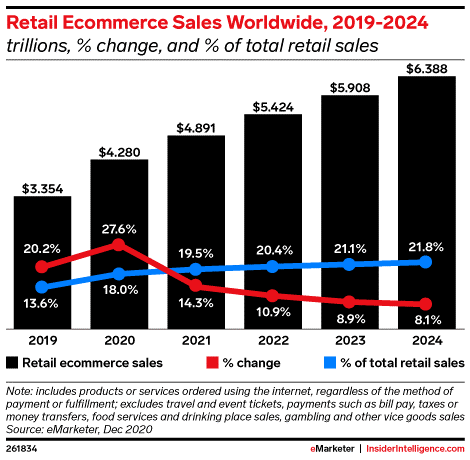
– 2.14 Billion Online Buyers Worldwide
- “Over 2.14 billion people worldwide are expected to buy goods and services online in 2021 (Statista).”
- “Global online sales are expected to account for 22% of total retail sales ( vs.14.1% in 2019, Statista).”
- “The global retail ecommerce market will be worth $6.54 trillion in 2023 (vs.$3.53 trillion in 2029, Statista).”
- “By 2040, it is likely that 95% of retail purchases will be made online, and traditional retail may be obsolete (Nasdaq).”
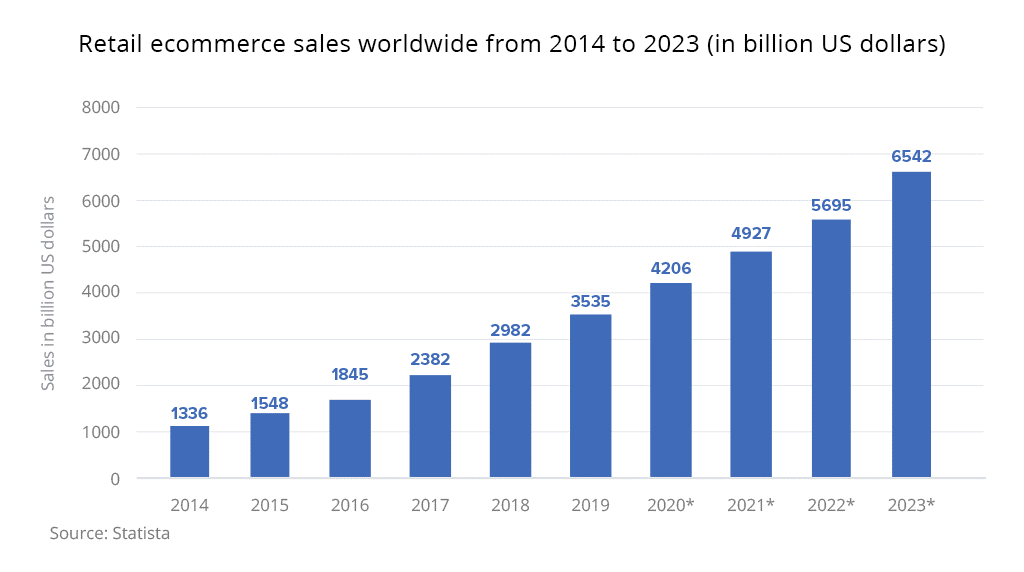
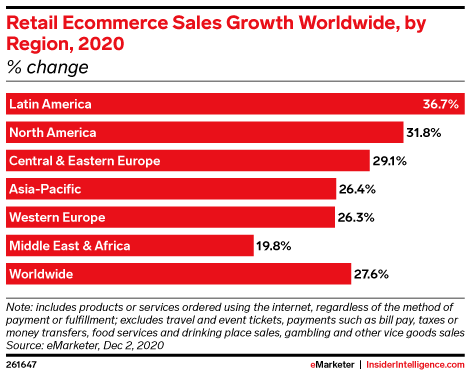
– Orders Increased by 60% as a Result of COVID-19
- “During COVID-19, the average number of items per order increased by 60% (Contact Pigeon).”
- “During the pandemic, 44% of consumers tried new brands”
- “43% of shoppers feel more positive about shopping online, approximately 40% of consumers say they’re more comfortable with digital technology than they were prior to the lockdown (Wunderman Thompson Commerce).”
- “GMV increased by over 490% year on year in August for online gift stores (Wix).”
- “Despite COVID-19, almost 90% of global shoppers will still shop for Christmas and other seasonal holidays (Rakuten).”
The coronavirus outbreak has boosted ecommerce. Online shopping in many categories, such as home furnishings, is expected to continue in 2021. Furthermore, more shoppers are purchasing products from previously unknown brands and are becoming more at ease with technology.
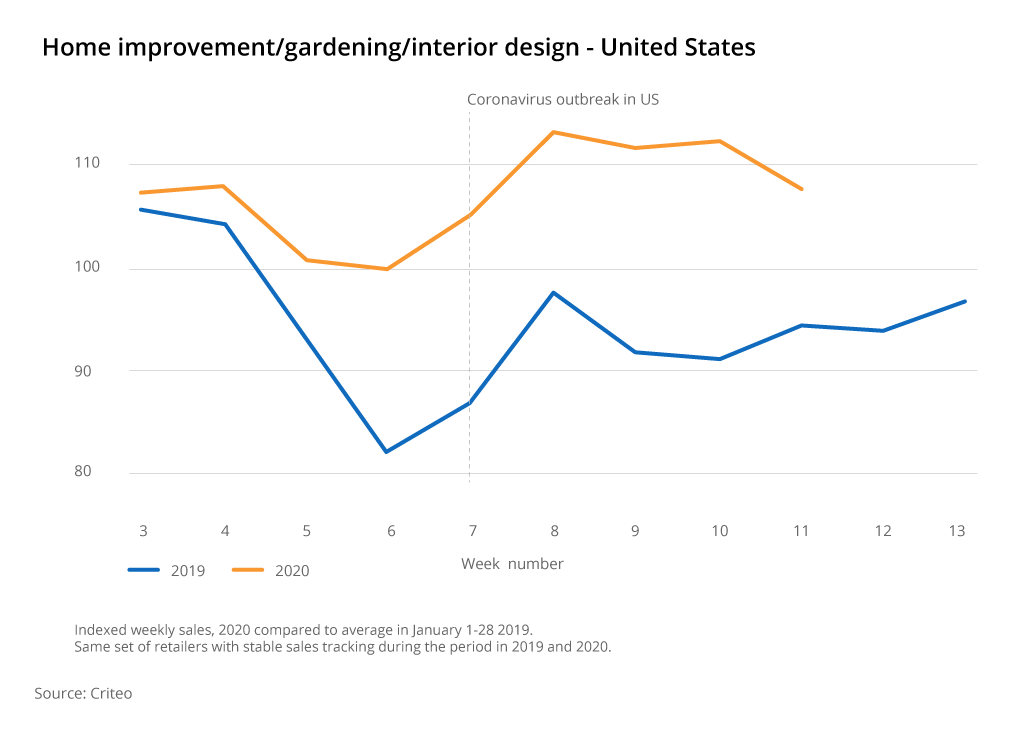
– 70% of Online Buyers Make Purchases From Foreign Websites
- “70% of online shoppers already purchase from foreign site (eMarketer)”
- “Almost half of all US shoppers make cross-border purchases (Pitney Bowes)”
According to eMarketer, 80% of retailers worldwide agree that cross-border trade is profitable or that sellers have successfully increased sales by up to 1,000% after expanding their marketplace presence.
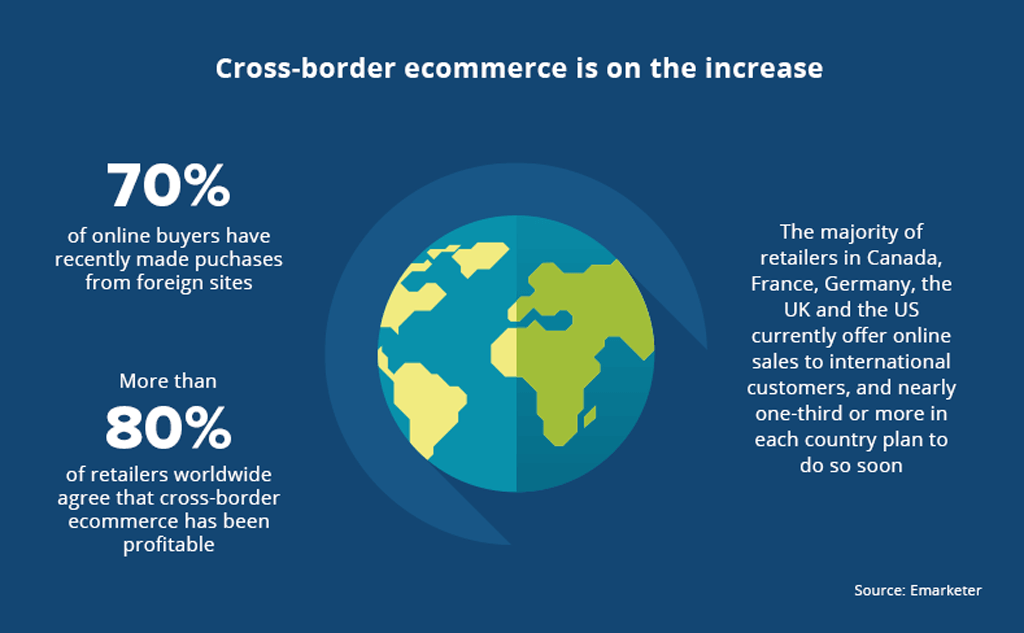
– Some Global Ecommerce Trends to Keep An Eye On
1. It’s the age of mobile shopping
The COVID-19 pandemic had a significant impact on global ecommerce trends. With brick-and-mortar stores closing overnight, customers flocked to the internet to purchase their goods. According to experts, the pandemic hastened the shift to online shopping by up to five years.
M-commerce will continue to grow in the coming years. People can now shop their phones thanks to technology advancements. According to Insider Intelligence, m-commerce volume will grow at a 25.5% compound annual growth rate (CAGR) until 2024, approaching $488 billion in sales, accounting for 44% of all ecommerce transactions.
2. Online shopping takes place across borders
To begin, going global does not necessitate a global presence. Online shoppers are increasingly looking for purchases outside of their home country. In fact, according to one study, the United States accounted for the majority of India’s oversea purchases.
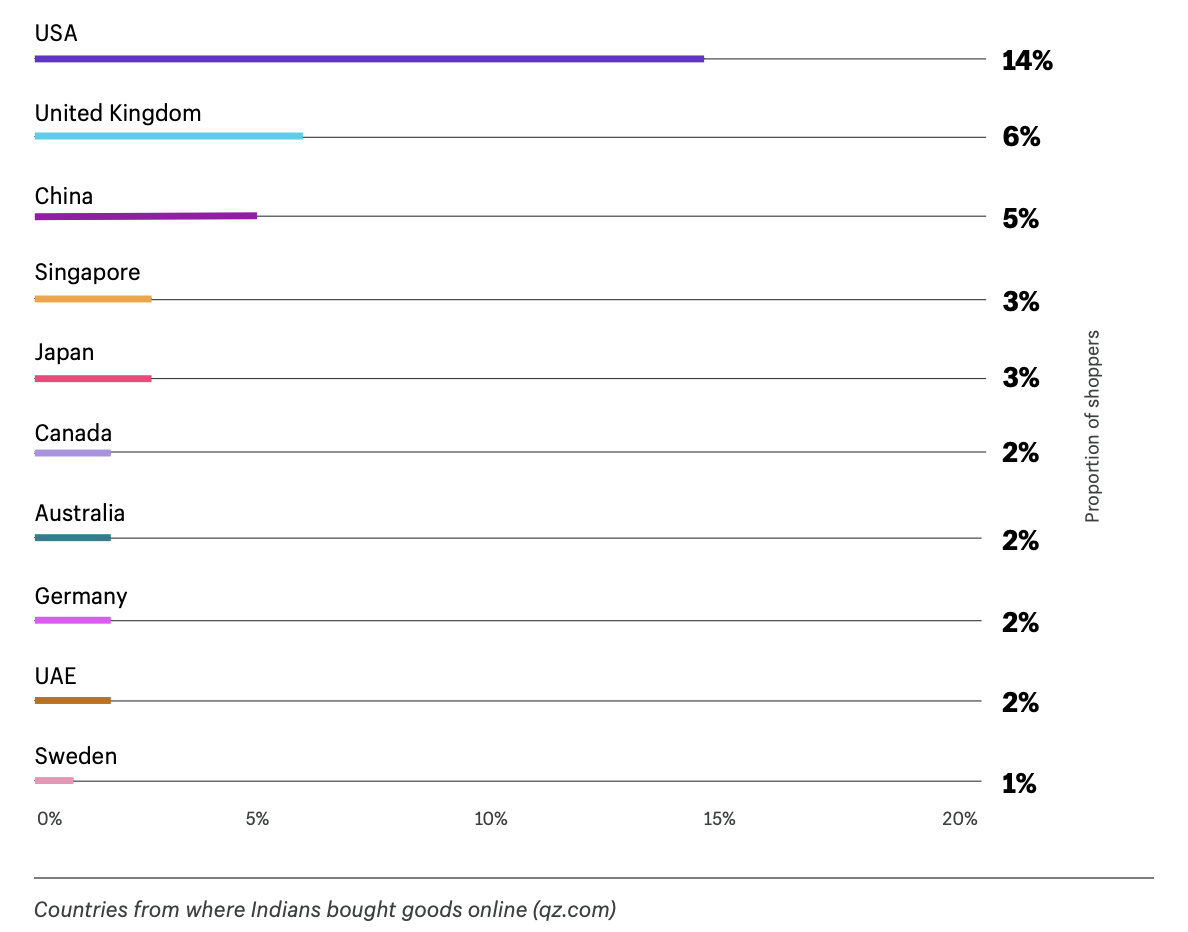
Promoting social content and advertising online in other countries, even if all you do is track engagement rather than sales, test viability. However, experimenting with marketplaces in target regions, where 62% of global online sales now occur, may be the best strategy.
3. Product market fit varies depending on region and country
Making tactical decisions about which geographies to prioritize is dependent on product market fit: validating existing demand or opportunity for your offerings in new areas. For instance, despite considerable effort (and expense), deodorant has never been a successful product in China, owing primarily to biological reasons. Nielsen’s Connected Commerce report offers a detailed breakdown of the most profitable online industries by region. Aligning those verticals with your own provides a strong foundation for guiding global decisions.
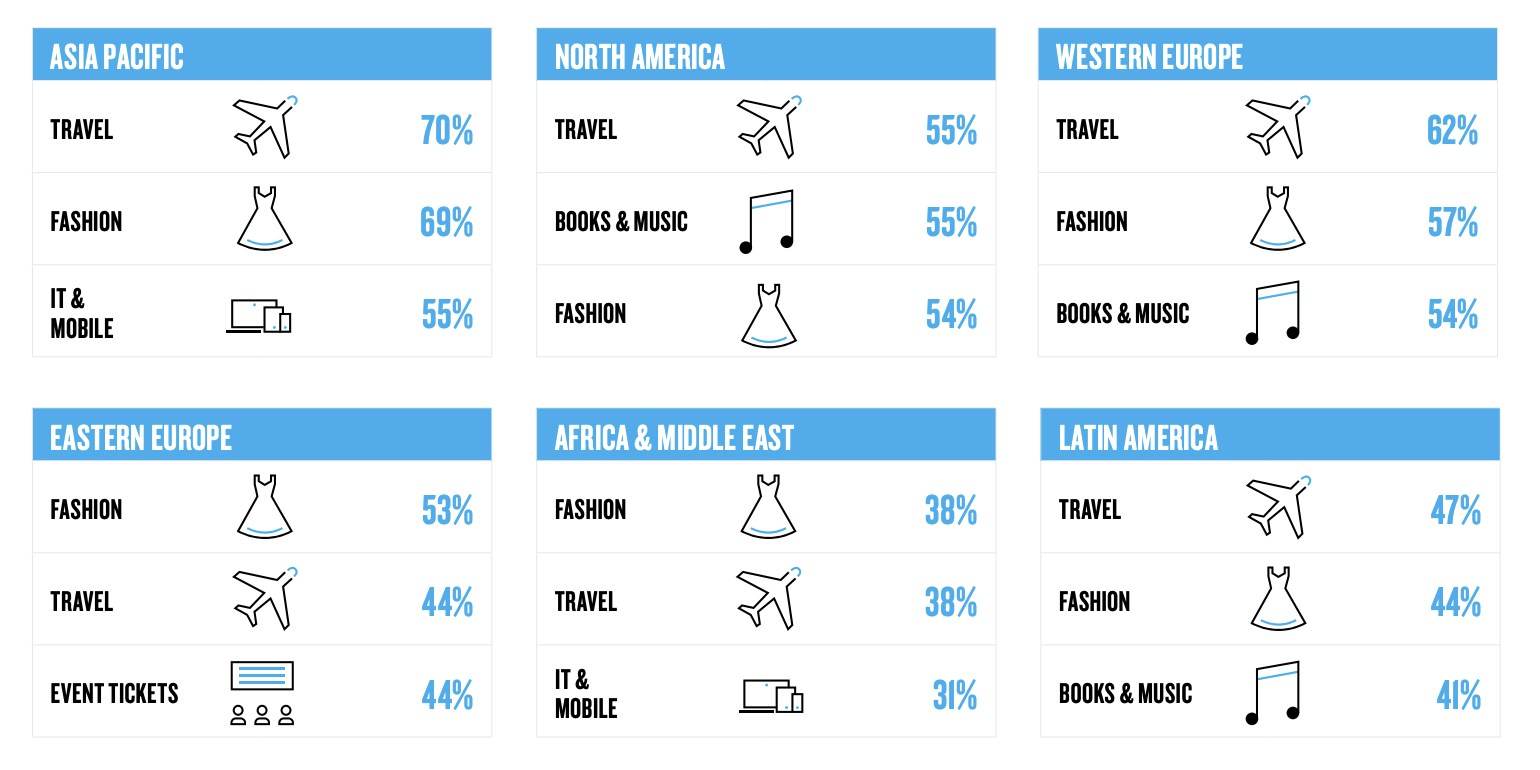
4. Localized language matters most
Beyond Google Translate, going native with your site’s language can make or break global sales. From first impression to check-out, it creates a positive customer experience.
CSA Research discovered that 65% of consumers prefer content in their language, even if it is of poor quality, based on a survey of 8,709 global consumers in 29 countries. Furthermore, 40% will not buy from websites in other languages.
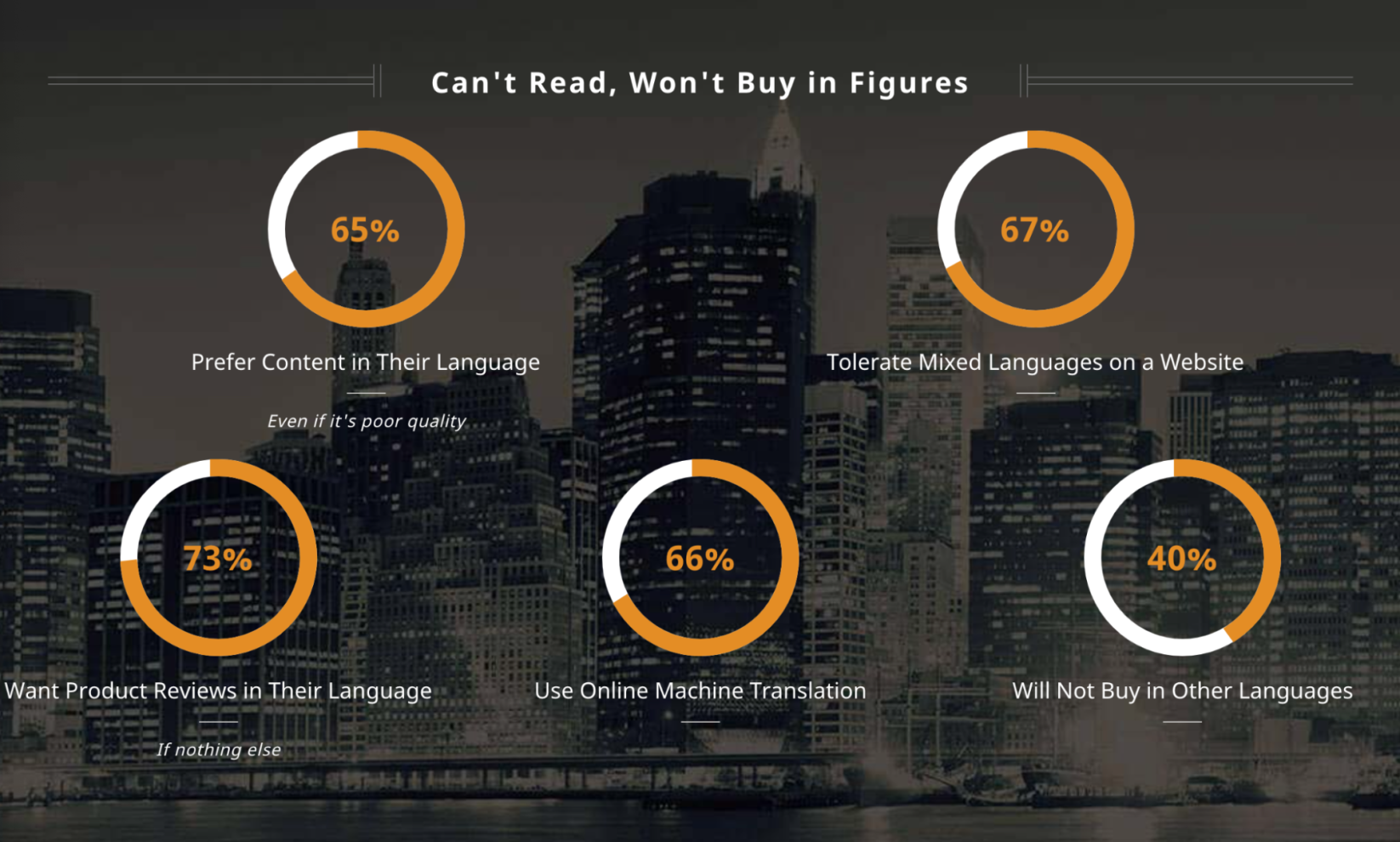
The last finding merits further investigation. Localization can feel overwhelming at times, like an all-nothing endeavor (either everything has to be country-specific or why bother). It isn’t.
FireApps compiled a list of five predictions for 2021 that they believe will propel your ecommerce forward and boost success.
1. Online niche marketplaces becoming increasingly popular
Every business looks for ways to increase its revenue. It’s no brainer to sell on online marketplaces.
You’re probably thinking of the most well-known marketplaces like Amazon, eBay, Alibaba, Etsy, and so on. These are not, however, your only options. In fact, there are over 100 online marketplaces to take advantage of. In 2021, the emphasis will be on niche online marketplaces across industries and sectors.
Forrester predicts niche B2B marketplaces will fully (re)emerge. In 2021, these niche online marketplaces will continue to appeal to B2B sellers and customers. When you’re gearing up to launch a new ecommerce business or have been selling online for years, online marketplaces should be a key component of your 2021 and beyond strategy.
2. International traffic to cross-border ecommerce websites will soar to unprecedented levels.
We know that domestic traffic and international traffic to a number of the largest ecommerce sites in a variety of markets.
FireApps discovered that international traffic is outpacing domestic growth and that international traffic accounts for an increasing percentage of total traffic year over year. What does this mean for domestic retailers? As more shoppers make cross-border purchases, the percentage of international traffic to ecommerce sites will grow faster than domestic traffic.
This makes sense given that the world has far more shoppers than any single market. Based on these trends, FireApps predict that by 2025, international traffic directed to the largest global websites will account for more than half of total traffic. In other words, many ecommerce brands will see more global traffic than domestic traffic over the next few years.
3. Social ecommerce will increase globally
Prepare for social commerce or risk falling behind the competition. It’s really simple. Consumers today have extremely high expectations for their shopping experience. They want an integrated social media experience and to only have to use one site to purchase your item. 30% of online buyers polled say they will buy directly from social media.
Aside from leveraging traditional social media sites like Facebook and Instagram, you can also attract new customers and sell products through a variety of websites. Did you know that nearly half of all Pinterest users are looking for a product? When it comes to Facebook and Instagram, the figures drop to 15% and 11%, respectively.
According to Nielsen research, 73% of online respondents use reviews to make a purchase. According to research from Fan & Fuel, 92% of consumers will be hesitant to make a purchase if reviews are not available. Customers can comment on product photos on social media, making it a natural breeding ground for reviews, and they don’t have to look far for opinions they value.
Many brands have also found success in using social media to build loyal customer base. With an increased followers, a brand can enslave a global audience and interact in order to cultivate that coveted personalized experience. To compete, a prediction is that ecommerce merchants entering new global markets will need a social selling strategy that takes into account each market’s local preferences.
4. Personalized shopping ecommerce
People’s expectations of the shopping experience are rising, despite the fact that they are increasingly shopping online. Creating a website and selling your products online is not enough. Money will not just start pouring in when you launch your new webshop. The competition is heating up, and online purchasing habits are changing faster than ever.
When a customer’s shopping experience is personalized, he or she spends more 48%. It is critical to gather as much information as possible about your customers in order to provide a personalized experience and present relevant offers to them. Fortunately, 57% of online shoppers are willing to give a brand their personal information if it improves their shopping experience.
How do you gather the necessary data? There are several approaches you can take to gather information about your customers. For instance, if you aren’t already utilizing a direct-to-consumer strategy, you should consider it. Gamification is another strategy in which you can run a competitor that requires your customers to provide more information about themselves. Alternatively, you could simply offer your customer a discount in exchange for completing a short survey.
Furthermore, one method for localizing customer shopping experiences is to use a localization app. Transcy provides a comprehensive localization solution to customers all over the world. It generates a translation service to translate all of the content, as well as a currency converter for use during the purchase process. We understand that communicating with foreign customers in their native languages is a sign of respect. It leads to higher conversion rates and more enjoyable shopping experiences.
5. Brand will create differentiated global marketing budget
Retail marketer’s budgets will need to be more strategic as cross-border ecommerce grows. While marketing costs differ by country, FireApps expects marketing budgets to be distributed proportionally across all markets rather than being devoted solely to the domestic market.
Customer acquisition costs (CAC) differ by market, so brands must account for this when distributing budgets across markets. Furthermore, in response to global events or local shifts in their consumer behavior, cross-border brands will become more proactive in shifting their spending between markets.
As a result of viewing the budget as a role rather than domestic and international, brands will have more control and flexibility to direct their marketing dollars to the areas that will have the greatest impact on the business, rather than being locked into a fixed budget per parket.
Wrap it up!
The accelerated growth of ecommerce is expected to continue into 2021. According to Statista, average annual growth is continuing at a rate of 15%.
Businesses and retailers should begin planning for these trends this year. To be successful cross-border ecommerce, you must first provide global customers with localized shopping experience.

For brands looking to capitalize on all of this cross-border demand for goods, taking a close look at your current ecommerce store and eliminating any friction points from the shopping, checkout, and delivery experiences will be critical.
FireApps believes that they will be able to assist your businesses get in touch with cross-border ecommerce fluently from now!
Are You Looking for Products to Sell?
Syncee Marketplace is an ideal pick if you are new to ecommerce and you are looking for products to sell, and also if you have an existing store and looking for ways to extend your product assortment. On Syncee Marketplace you can find millions of products from reliable dropshipping and wholesale suppliers from all over the world. The application takes care of the automatic product data uploads, updates, and order data synchrnoization.




